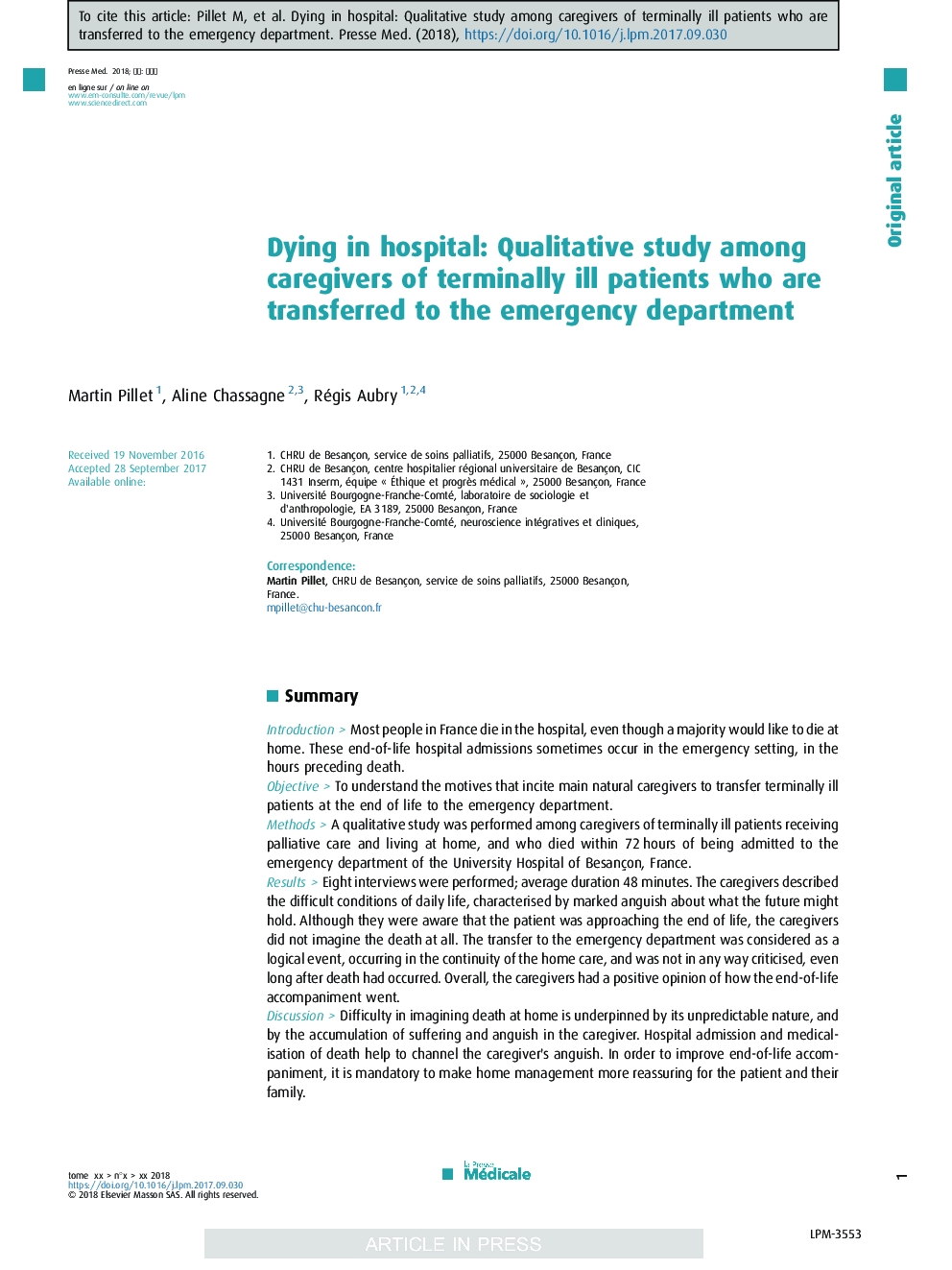| Article ID | Journal | Published Year | Pages | File Type |
|---|---|---|---|---|
| 8766127 | La Presse Médicale | 2018 | 8 Pages |
Abstract
La difficulté à imaginer le décès à domicile est sous-tendue par son caractère imprévu et par l'accumulation de la souffrance et de l'angoisse de l'aidant. L'hospitalisation et la médicalisation de la mort canalisent en partie cette angoisse. L'amélioration de l'accompagnement de fin de vie nécessite de rendre plus sécurisante la prise en charge à domicile pour le patient et ses proches.What is already known
- The rate of deaths occurring at home is low, despite the fact that many people wish to die at home.
- Emergency departments experience a large number of emergency admissions of terminally ill patients who are at the end of life.What this study adds
- The accumulation of difficulties at home, and the lack of preparation of the caregiver in accompanying the end of life lead to the rupture of the home-care model, and prompt the caregiver to transfer the patient to the emergency department.
- Hospitalisation of a dying patient at the last minute can be a positive experience for the caregiver (who has the feeling of having kept the patient at home as long as possible)
- It is mandatory for end-of-life accompaniment to focus more on the caregiver, particularly with more information about what may happen at home.
- The rate of deaths occurring at home is low, despite the fact that many people wish to die at home.
- Emergency departments experience a large number of emergency admissions of terminally ill patients who are at the end of life.What this study adds
- The accumulation of difficulties at home, and the lack of preparation of the caregiver in accompanying the end of life lead to the rupture of the home-care model, and prompt the caregiver to transfer the patient to the emergency department.
- Hospitalisation of a dying patient at the last minute can be a positive experience for the caregiver (who has the feeling of having kept the patient at home as long as possible)
- It is mandatory for end-of-life accompaniment to focus more on the caregiver, particularly with more information about what may happen at home.
Related Topics
Health Sciences
Medicine and Dentistry
Medicine and Dentistry (General)
Authors
Martin Pillet, Aline Chassagne, Régis Aubry,
